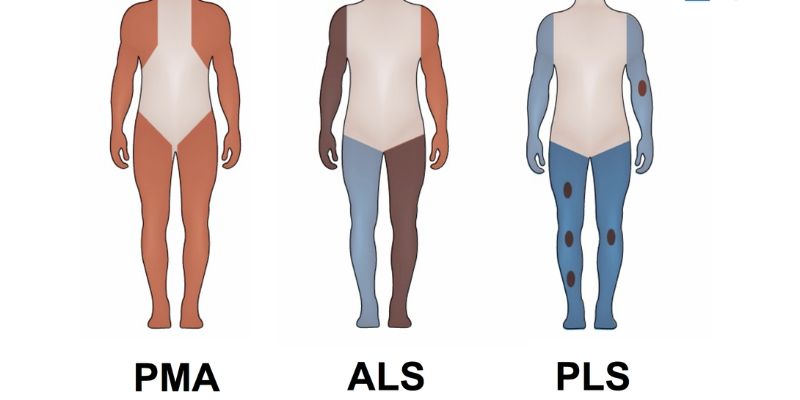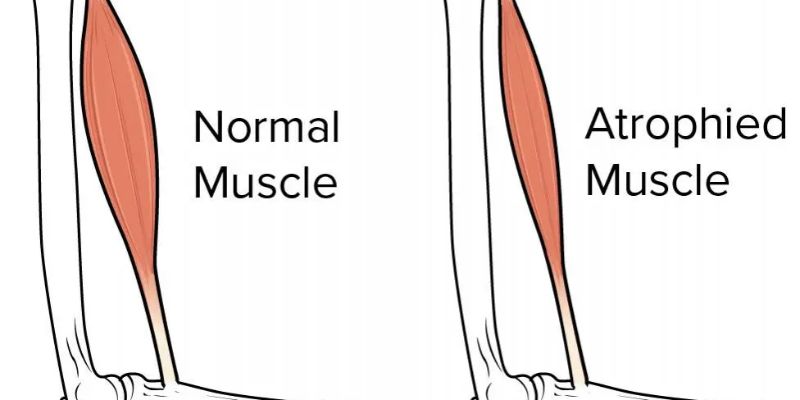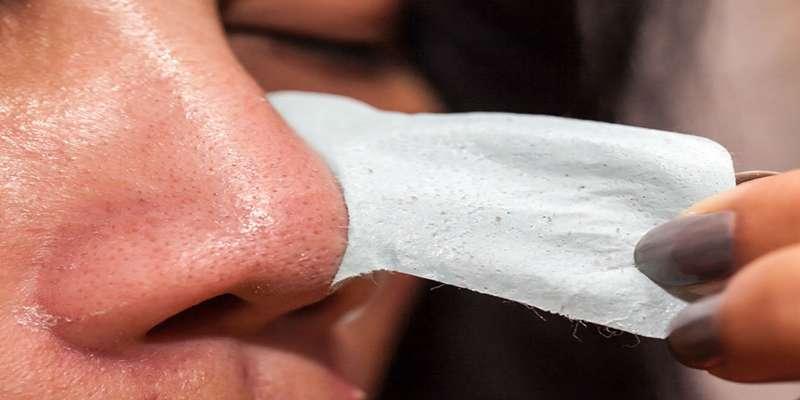Do you often find yourself worried about losing muscle mass? Have you heard of progressive muscular atrophy but are unsure what it is? In this blog post, we will delve into the ins and outs of this condition--from its definition to its symptoms and treatments.
By providing an overview of progressive muscular atrophy, we hope to reduce any confusion or anxiety that may be floating around so that those affected by the condition can become more knowledgeable and empowered in managing their health.
Progressive Muscular Atrophy Overview

Progressive Muscular Atrophy (PMA) is a neurodegenerative disorder affecting adult motor neurons. It is characterized by muscle weakness and atrophy, progressing over time, leading to increased disability and decreased quality of life.
PMA can cause progressive muscle weakness and wasting, spasticity, difficulty walking, swallowing problems, drooping eyelids and facial muscles, loss of reflexes, fatigue, breathing trouble, and speech difficulties.
Symptoms vary depending on the type of PMA but generally worsen over time if untreated. Treatment for PMA includes physical therapy to help maintain strength and mobility, medications to manage symptoms such as spasticity or pain, nutritional supplements to prevent malnutrition; assistive devices such as a wheelchair; and psychological support.
Progressive Muscular Atrophy Symptoms
Progressive muscular atrophy (PMA) is a degenerative disorder affecting voluntary muscles. Over time, the condition leads to weakness and muscle wasting, usually in the legs, arms, body, and hands. People with PMA may experience several symptoms, including:
- Muscle weakness and wasting, resulting in difficulty using their arms--a condition known as flail arm syndrome--and clumsiness due to decreased motor function.
- Fatigue, which can be severe enough to interfere with everyday activities.
- Muscle pain and cramps come and go throughout the day or night.
- Muscle twitching is often uncomfortable or even painful.
- Weight loss due to a decreased ability to move around and exercise.
- Difficulty breathing, as weakened muscles can't support the lungs.
Causes
Progressive Muscular Atrophy (PMA) is a rare condition of unknown cause, but researchers believe genetics and environmental factors may contribute.
Genetics have been demonstrated to play a role in cases where multiple relatives are affected by PMA. The environment can also be a factor, as certain toxins and chemicals have been linked to an increased risk of developing the condition.
Some other possible causes of PMA include:
- Genetic mutations that affect motor neurons or muscle cells
- Malfunctioning proteins due to genetic mutations
- Viruses that damage nerve pathways or interfere with muscle growth
- Exposure to toxins or harmful substances such as heavy metals
- Damage from head trauma or other injuries can lead to nerve damage
- Autoimmune diseases may attack the nerves and muscles.
Diagnosing Progressive Muscular Atrophy (PMA)

Progressive muscular atrophy (PMA) is a progressive motor neuron disease that can cause the weakening of voluntary muscles, resulting in impaired movement and mobility. Because the symptoms are similar to other disorders, they cannot be easy to diagnose.
To accurately diagnose PMA, medical providers must rule out other conditions such as ALS, spinal muscular atrophy, myopathy, and more before reaching a definitive diagnosis.
Collecting Symptoms, Health History &'' Physical Examination
The first step in diagnosing PMA is collecting information about the patient's symptoms, health history, and physical examination of the muscles.
The medical provider will ask questions about any muscle weakness or pain experienced by the patient and will request details about their medical history, including any past or current illnesses, injuries, and medications. They may also run a physical examination to check for muscle weakness or other signs of the disorder.
Tests to Determine Diagnosis
Once the symptoms, health history, and physical exam have been completed, specific tests may be recommended for a definitive diagnosis.
These tests can include computed tomography (CT) scans to look for structural issues within the spinal cord and brain; nerve conduction studies to measure how quickly electrical impulses move through nerves; electromyography (EMG) to assess muscle and nerve health; lumbar puncture, which removes and tests spinal fluid; as well as magnetic resonance imaging (MRI) and blood tests if other diseases are suspected.
Misdiagnosis of PMA
Due to the similarity between PMA and other motor neuron diseases, misdiagnosing PMA is a possibility. This can be problematic as it can delay treatment, and subsequent problems with muscle wasting, movement, and mobility may progress faster than with proper treatment.
To help avoid misdiagnosis, a thorough medical history, and an accurate physical examination should be obtained before any tests are conducted. It is also important to consider all possible diagnoses before settling on one.
With the right diagnosis, individuals affected by PMA can begin receiving the necessary treatments for managing their condition and leading healthy life.
Treatment for Progressive Muscular Atrophy
Progressive muscular atrophy (PMA) is a progressive, incurable disease that affects muscle strength and causes the muscles to decline over time. Treatment primarily focuses on managing the symptoms of PMA to maximize the quality of life and slow the progression.
Common treatments include occupational therapy, physical therapy, medications, and lifestyle modifications.
Occupational Therapy
Occupational therapy is designed to help people with disabilities or chronic conditions perform everyday tasks more easily. It involves adapting activities so that they can be done safely and independently.
For those with PMA, occupational therapists can assess their needs and recommend assistive devices such as wheelchairs or walkers if needed, as well as provide advice on energy conservation and how to make a home safer for an individual with PMA.
Physical Therapy
Physical therapy, or physiotherapy, treats PMA to help maintain muscle strength and reduce pain. This type of therapy utilizes stretching exercises, massage, heat, cold treatments, and other techniques to improve mobility, range of motion, balance, coordination, endurance, flexibility, posture control, and strength.
Physical therapists can also teach individuals how to manage fatigue by resting when needed and pacing activities throughout the day.
Medications
Riluzole is a medication approved by the U.S Food and Drug Administration (FDA) for treating ALS but may be used off-label to slow the progression of PMA.
Riluzole reduces glutamate levels in the brain, a neurotransmitter that can cause nerve injury when present at high levels. Additionally, corticosteroids may be prescribed to reduce inflammation and muscle spasms, as well as antispasmodics and other medications for pain relief.
Lifestyle Modifications
Making lifestyle modifications is an important part of treatment for individuals with PMA. Eating a balanced diet with adequate protein intake helps fuel muscles while staying hydrated throughout the day helps keep muscles from becoming stiff and weak.
It's also important to exercise regularly when possible, such as swimming or using a recumbent bike; this helps maintain muscle strength and prevent stiffness. Additionally, getting enough quality sleep is essential for managing fatigue since PMA can cause excessive tiredness.
By considering all these treatments, individuals with PMA can maximize their quality of life and manage their symptoms more effectively.
FAQs
What is the survival rate for progressive muscular atrophy?
The survival rate for progressive muscular atrophy varies depending on the severity of the condition, but some individuals have been known to live 20-30 years after diagnosis.
Can PMA be prevented?
Unfortunately, there is no way to prevent PMA, as it's a genetic disorder. However, lifestyle modifications such as eating a healthy diet and exercising regularly can help manage symptoms and slow the disorder's progression.
What are the common symptoms of PMA?
Common symptoms of PMA include muscle weakness or pain in the arms and legs, difficulty walking or standing up from a seated position, drooping eyelids or facial muscles, and impaired coordination. See your doctor for a proper diagnosis if you experience these symptoms.
Conclusion
Progressive Muscular Atrophy is a serious condition that affects the muscles of those diagnosed. It can be debilitating, causing a loss of strength and mobility. Its effects are far-reaching and require proper medical attention. Patients may find relief through regular treatment options such as physical therapy, medications, and lifestyle changes as research on PMA advances, new treatments, and management strategies are always available. If you or someone you know has been diagnosed with PMA, seeking appropriate medical help and advice from experts who understand the disorder is important.




